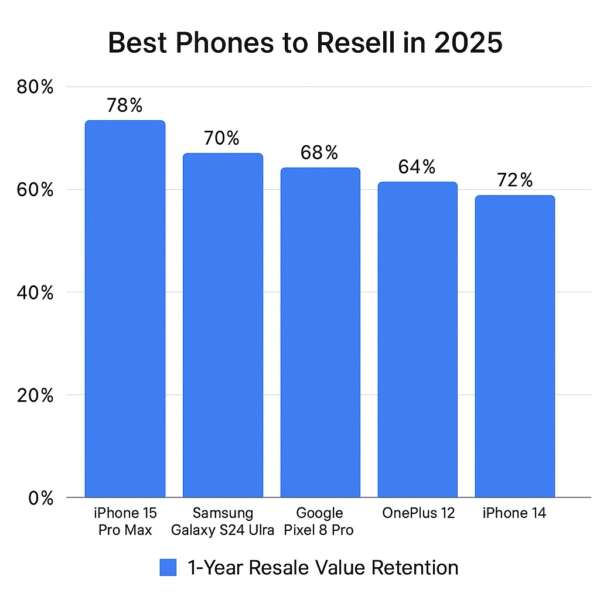Best Phone for Mobile Gaming 2025: 5 Epic Picks That Crush the Competition
Searching for the best phone for mobile gaming 2025? Explore 5 next-gen devices with elite performance, high refresh rates, and unmatched battery life for serious gamers.
Table of Contents
Why Mobile Gaming Needs High-Performance Phones
The best phone for mobile gaming 2025 isn’t just about looks. Today’s games—like Call of Duty: Warzone Mobile, Genshin Impact, and PUBG New State—require extreme processing power, ultra-fast refresh rates, and serious battery life. As mobile games approach console-level complexity, choosing the right device is critical to staying competitive and avoiding lag, overheating, or throttling.
According to Statista, mobile gaming revenue surpassed $100 billion globally in 2024, with demand growing for phones optimized specifically for gaming. That trend is only intensifying in 2025.
Best Phone for Mobile Gaming 2025: Top 5 Powerhouses
1. ASUS ROG Phone 8 Pro
The ASUS ROG Phone 8 Pro is engineered with elite mobile gamers in mind. It combines raw power, smooth display performance, and physical enhancements like an external fan and programmable triggers.
-
Processor: Snapdragon 8 Gen 3+
-
Display: 6.78” AMOLED, 165Hz refresh rate
-
Cooling: AeroActive Cooler X support
-
Battery: 6000mAh with 65W fast charging
-
RAM: Up to 16GB
💡 Read the specs on ASUS’s official site.
Why it’s the best phone for mobile gaming 2025: Ultra-responsive controls and unbeatable cooling make this device nearly unbeatable for marathon gaming.
2. Samsung Galaxy S26 Ultra
Samsung’s flagship, the Galaxy S26 Ultra, delivers serious performance for both productivity and play. Though not marketed purely for gaming, it’s a powerhouse under the hood.
-
Chipset: Snapdragon 8 Gen 3 or Exynos 2500
-
Display: 144Hz adaptive AMOLED
-
Battery: 5000mAh with 45W fast charging
-
Extras: Great audio, Samsung DeX, and Xbox Cloud Gaming support
🎮 Samsung Gaming Hub gives you easy access to Xbox and GeForce NOW.
Why it’s among the best phones for mobile gaming 2025: Its graphics rendering is top-tier and pairs well with external gamepads and cloud gaming apps.
3. iPhone 17 Pro Max
Apple’s iPhone 17 Pro Max combines power and polish, offering a fluid mobile gaming experience thanks to its A19 Bionic chip and superior app optimization.
-
Processor: A19 Bionic
-
Display: 6.7” ProMotion OLED, 120Hz
-
Battery: 4400mAh with 35W fast charging
-
Ecosystem: Seamless Apple Arcade integration and exclusive titles
📱 Check out Apple Arcade for the latest mobile titles.
Why it’s a contender for best phone for mobile gaming 2025: Best-in-class graphics, controller support, and no lag—especially for iOS-exclusive games.
4. Nubia RedMagic 10 Pro
The RedMagic 10 Pro brings hardcore gaming design features to the table, with built-in cooling fans, customizable RGB lights, and shoulder triggers.
-
Processor: Snapdragon 8 Gen 3
-
Display: 6.8” AMOLED, 165Hz
-
Battery: 5000mAh with 80W fast charging
-
Unique Features: Built-in turbo fan, 520Hz trigger buttons
🔗 RedMagic Gaming Phones offer serious value for competitive players.
Why it’s one of the best phones for mobile gaming 2025: Delivers raw performance at a price that undercuts most competitors.
5. OnePlus 13R Gaming Edition
For those who want high-end specs without spending $1500, the OnePlus 13R Gaming Edition delivers excellent results at a more accessible price point.
-
Processor: Snapdragon 8s Gen 3
-
Display: 6.74” AMOLED, 144Hz
-
Battery: 5500mAh with 100W charging
-
Gaming Tools: HyperBoost Engine, Gaming Tools overlay
💸 OnePlus official site has details on the full Gaming Edition features.
Why it’s the best budget-friendly phone for mobile gaming 2025: You get premium gaming power at a mid-range price—perfect for serious gamers on a budget.
How to Choose the Best Phone for Mobile Gaming 2025
When selecting the best phone for mobile gaming 2025, focus on:
-
High Refresh Rate Displays: 120Hz+ for buttery-smooth gameplay
-
Powerful Processors: Snapdragon 8 Gen 3 or A19 Bionic are ideal
-
Efficient Cooling Systems: Prevents lag during intense gaming
-
Long Battery Life: Look for 5000mAh or more
-
Trigger Buttons or Gaming Modes: These give you an edge in FPS and action games
Use benchmark sites like GSMArena or AnTuTu to compare real-world gaming performance.
Recommended Accessories for Mobile Gamers
Pairing the best phone for mobile gaming 2025 with quality accessories will elevate your experience:
-
Gaming Controllers: Razer Kishi, Backbone One
-
Cooling Fans: ASUS AeroActive Cooler, RedMagic Ice Dock
-
Bluetooth Headsets: Low-latency audio improves reaction times
-
Power Banks: 10,000mAh or more for travel sessions
-
Mounts/Stands: Keep your hands free and posture intact
🔗 Explore curated gaming accessories at Nanotech Mobile
Final Verdict: What Should You Buy?
Here’s a quick rundown based on your needs:
| Need | Phone | Why |
|---|---|---|
| Ultimate gaming power | ASUS ROG Phone 8 Pro | Built for gamers, insane specs |
| Flagship performance + style | Galaxy S26 Ultra | Polished, powerful, versatile |
| iOS gamer | iPhone 17 Pro Max | Apple Arcade & unmatched fluidity |
| Hardcore features at good price | RedMagic 10 Pro | Custom triggers, built-in fan |
| Budget-friendly gaming | OnePlus 13R Gaming Edition | Solid value, gaming optimizations |
Whether you’re a casual gamer or a competitive one, finding the best phone for mobile gaming 2025 comes down to performance, ergonomics, and value. These five phones give you a solid place to start your decision.
Explore More from Nanotech Mobile
Need help upgrading your phone or trading in your old device? Visit us at NanotechMobile.ca or stop by in Regina. We’ll help you gear up like a pro.

